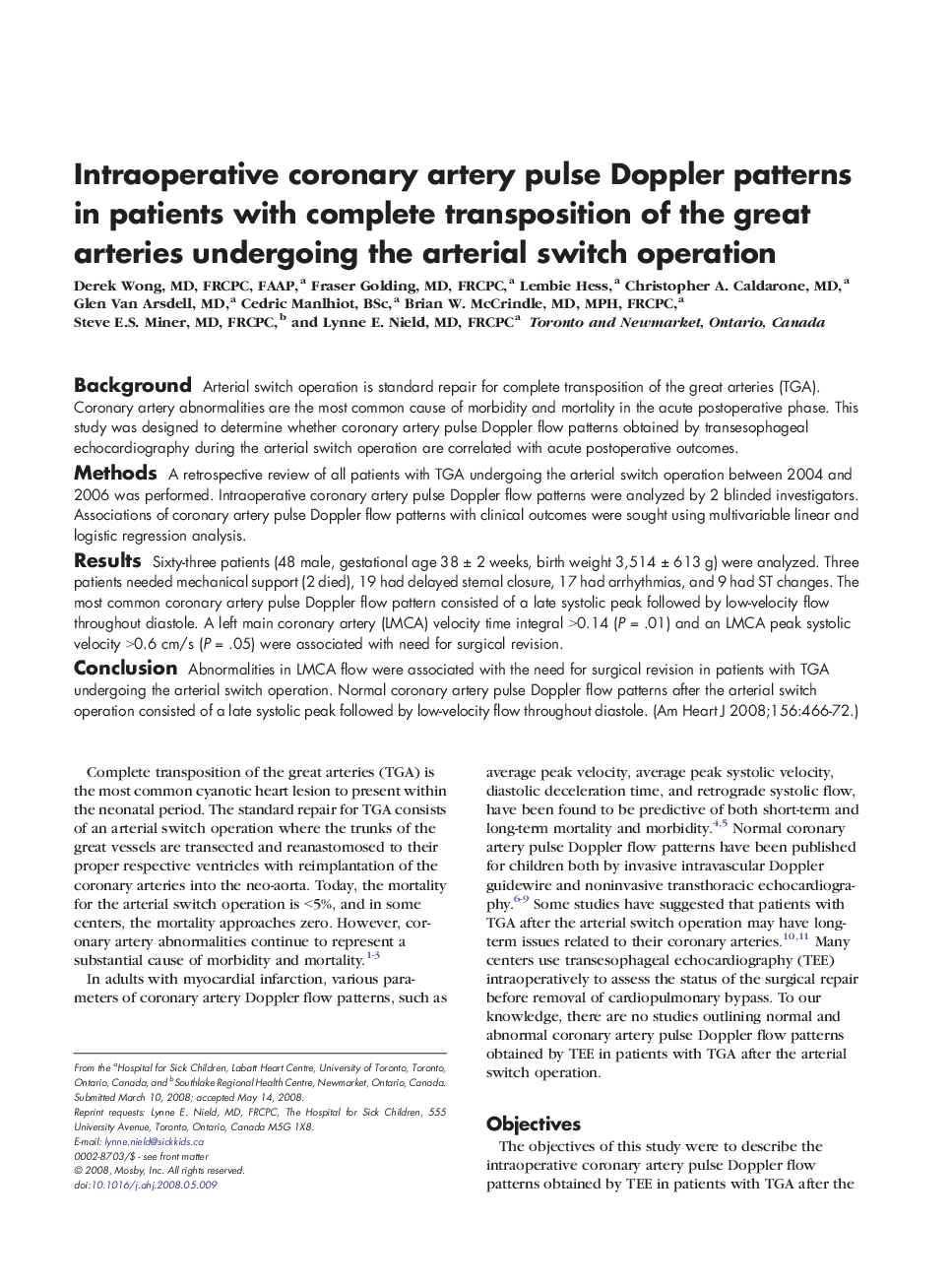| Article ID | Journal | Published Year | Pages | File Type |
|---|---|---|---|---|
| 2849859 | American Heart Journal | 2008 | 7 Pages |
BackgroundArterial switch operation is standard repair for complete transposition of the great arteries (TGA). Coronary artery abnormalities are the most common cause of morbidity and mortality in the acute postoperative phase. This study was designed to determine whether coronary artery pulse Doppler flow patterns obtained by transesophageal echocardiography during the arterial switch operation are correlated with acute postoperative outcomes.MethodsA retrospective review of all patients with TGA undergoing the arterial switch operation between 2004 and 2006 was performed. Intraoperative coronary artery pulse Doppler flow patterns were analyzed by 2 blinded investigators. Associations of coronary artery pulse Doppler flow patterns with clinical outcomes were sought using multivariable linear and logistic regression analysis.ResultsSixty-three patients (48 male, gestational age 38 ± 2 weeks, birth weight 3,514 ± 613 g) were analyzed. Three patients needed mechanical support (2 died), 19 had delayed sternal closure, 17 had arrhythmias, and 9 had ST changes. The most common coronary artery pulse Doppler flow pattern consisted of a late systolic peak followed by low-velocity flow throughout diastole. A left main coronary artery (LMCA) velocity time integral >0.14 (P = .01) and an LMCA peak systolic velocity >0.6 cm/s (P = .05) were associated with need for surgical revision.ConclusionAbnormalities in LMCA flow were associated with the need for surgical revision in patients with TGA undergoing the arterial switch operation. Normal coronary artery pulse Doppler flow patterns after the arterial switch operation consisted of a late systolic peak followed by low-velocity flow throughout diastole.
